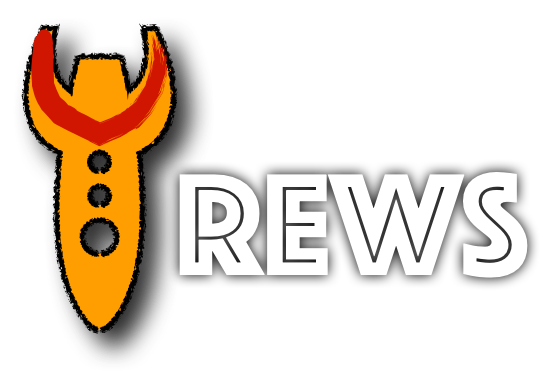The realm of management has experienced significant evolution over the decades, particularly in the domains of portfolio, program, and project management. This evolution reflects the increasing complexity of organizational needs and the parallel development of management methodologies and tools. This article delves into the historical context, transformative milestones, and future trajectories of portfolio, program, and project management, providing a comprehensive understanding of their interconnected evolution.
Historical Context and Early Development
Project Management Origins:
Project management, as we recognize it today, began to take shape in the mid-20th century. Historically, project management practices can be traced back to ancient civilizations, such as constructions by the Indians, Mayans, Incans, Chinese, Greeks, Egyptians, Romans etc. However, modern project management gained prominence with early examples like the Manhattan Project during World War II, which demonstrated the necessity of coordinated planning and execution of complex endeavors. The development of standardized methodologies, such as the Project Management Body of Knowledge (PMBOK), marked a formalization of project management practices, leading to structured approaches that could be replicated across various industries.
Program Management Emergence:
Program management emerged as organizations recognized the need to manage related projects collectively to achieve strategic objectives. In the 1970s and 1980s, aerospace and defense industries pioneered program management practices to handle the complexity of large-scale projects. These industries required a way to manage interdependencies, resource constraints, and strategic alignment of multiple projects, which led to the development of program management as a distinct discipline.
Portfolio Management Development:
Portfolio management’s roots can be traced back to the financial industry, where the concept of managing a portfolio of investments was already well established. By the late 1990s and early 2000s, organizations began applying portfolio management principles to their projects and programs. This approach enabled them to align projects with strategic goals, optimize resource allocation, and balance risk and reward. Portfolio management provided a holistic view of an organization’s investments, ensuring that resources were allocated to initiatives that delivered the most value.
Transformative Milestones
Introduction of Agile Methodologies:
The Agile Manifesto, introduced in 2001, revolutionized project management by emphasizing flexibility, customer collaboration, and iterative development. Agile methodologies like Scrum and Kanban gained popularity, especially in the software development industry. These approaches addressed the limitations of traditional waterfall methods, enabling faster delivery and adaptation to changing requirements. Agile’s influence extended to program and portfolio management, fostering a more adaptive and responsive management culture.
Advancements in Technology:
The digital revolution has been a significant driver of change in portfolio, program, and project management. Project management software tools like smartsheet, Asana, Monday.com, Microsoft Project, JIRA etc., have enhanced planning, tracking, and collaboration capabilities. Enterprise Resource Planning (ERP) systems integrated project and portfolio management functionalities, providing a holistic view of organizational activities. Additionally, the rise of cloud computing and data analytics has enabled real-time data access and informed decision-making.
Standardization and Best Practices:
The development and widespread adoption of standards and best practices have been crucial in advancing these management disciplines. Frameworks like PRINCE2, ITIL, and Six Sigma have provided a structured approach to managing projects, programs, and portfolios. These frameworks offer methodologies, processes, and templates that ensure consistency, efficiency, and effectiveness across organizations.
Current Landscape
Integrated Approaches:
Today, organizations increasingly adopt integrated approaches to portfolio, program, and project management. This integration ensures that strategic objectives guide project selection and prioritization. It also facilitates the alignment of resources and capabilities across projects and programs, maximizing value delivery. Tools like Project Portfolio Management (PPM) software have become essential in achieving this integration.
Focus on Value Delivery:
The contemporary focus in management practices has shifted from mere project completion to value delivery. Organizations emphasize benefits realization, ensuring that projects and programs contribute tangible and measurable value to stakeholders. This shift has led to the adoption of methodologies like Benefits Management and Value Management, which prioritize outcomes over outputs.
Agility and Adaptability:
In an era characterized by rapid change and uncertainty, agility and adaptability have become paramount. Agile project management practices have evolved to scale up to programs and portfolios. Frameworks like SAFe (Scaled Agile Framework) provide guidelines for implementing Agile at the enterprise level, enabling organizations to respond swiftly to market dynamics and technological advancements.
Influence of Artificial Intelligence
AI-Driven Project Management Tools:
Artificial Intelligence (AI) is transforming project management by introducing advanced tools that enhance efficiency and decision-making. AI-driven project management tools can automate routine tasks such as scheduling, resource allocation, and risk management. These tools use machine learning algorithms to analyze historical project data, predict potential issues, and recommend corrective actions, allowing project managers to focus on strategic decision-making.
Some notable AI-driven tools include:
- Asana: Asana’s AI capabilities help automate workflows, prioritize tasks, and predict project timelines. Asana AI introduces “AI teammates” that assist in planning, executing, and adapting workflows to changing needs.
- com: Uses AI to optimize resource allocation and project scheduling, enhancing efficiency by automating task management and providing intelligent insights for better decision-making.
- Smartsheet: Leverages AI to enhance collaboration and automate project updates, offering features like smart summaries and predictive analytics to keep projects on track.
- JIRA: JIRA incorporates AI to enhance project management through predictive analytics, automated workflows, and intelligent prioritization. It uses machine learning to forecast project outcomes, identify potential bottlenecks, and recommend optimizations, thus improving overall project efficiency and effectiveness.
Predictive Analytics:
AI enables predictive analytics in project management, providing insights into future project performance. By analyzing large datasets, AI can identify patterns and trends that humans might overlook. This capability allows project managers to anticipate risks, allocate resources more effectively, and make data-driven decisions. For example, predictive analytics can forecast project timelines, budget overruns, and resource bottlenecks, helping managers to proactively address these challenges.
Enhanced Communication and Collaboration:
AI-powered communication tools are improving collaboration among project teams. Natural language processing (NLP) technologies facilitate real-time translation, sentiment analysis, and automated meeting summaries. These tools ensure that team members are on the same page, regardless of their location or language. AI can also analyze communication patterns to identify potential issues in team dynamics and suggest interventions to improve collaboration.
Intelligent Automation:
Robotic Process Automation (RPA) is another AI application transforming project management. RPA can automate repetitive tasks such as data entry, report generation, and compliance checks. This automation reduces human error, increases efficiency, and frees up project managers to focus on more strategic activities. For instance, RPA can automatically update project status reports, ensuring that stakeholders always have access to the latest information.
Future Trajectories
Digital Transformation:
Digital transformation will continue to shape the future of portfolio, program, and project management. Emerging technologies like AI, machine learning, and the Internet of Things (IoT) will enhance decision-making, automate routine tasks, and provide predictive analytics. AI-powered tools can optimize resource allocation, forecast project risks, and improve stakeholder communication.
Sustainability and Ethical Considerations:
Sustainability and ethical considerations are gaining prominence in management practices. Organizations are increasingly integrating sustainability goals into their portfolios and programs, aligning projects with environmental, social, and governance (ESG) criteria. Ethical project management emphasizes transparency, accountability, and stakeholder engagement, ensuring that projects contribute positively to society.
Continuous Learning and Development:
The dynamic nature of management disciplines necessitates continuous learning and development. Professionals in portfolio, program, and project management must stay updated with evolving methodologies, technologies, and industry trends. Certification programs, professional development courses, and active participation in industry associations are essential for maintaining competence and relevance.
Conclusion
The evolution of portfolio, program, and project management reflects the ever-changing landscape of organizational needs and technological advancements. From the early days of project management during World War II to the contemporary focus on value delivery and agility, these disciplines have undergone significant transformations. As we look to the future, digital transformation, sustainability, and continuous learning will be key drivers of further evolution. By embracing these trends, organizations can navigate complexity, achieve strategic objectives, and deliver sustained value to their stakeholders.
References
- Agile Manifesto
- Microsoft Project
- SAFe (Scaled Agile Framework)
- JIRA AI
- Asana AI Capabilities
- com AI Features
- Smartsheet AI Integration
Author Bio
Kanamangalam Chakaravarthi “KC” Lakshminarasimham is a Director, Program Management at ExpediaGroup. With 2 decades of strategic project, program, and portfolio management experience in a variety of sectors, including finance, technology, healthcare, banking, and retail. He has led teams of project and program managers, overseeing all aspects of complex technical projects, including technology transitions, business transformations, and efficiency improvements.

